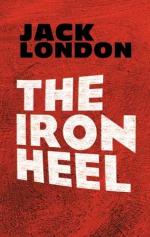And so with our disguises. It was necessary for us to practise until our assumed roles became real; until to be our original selves would require a watchful and strong exercise of will. Of course, at first, much was mere blundering experiment. We were creating a new art, and we had much to discover. But the work was going on everywhere; masters in the art were developing, and a fund of tricks and expedients was being accumulated. This fund became a sort of text-book that was passed on, a part of the curriculum, as it were, of the school of Revolution.*
* Disguise did become a veritable art during that period. The revolutionists maintained schools of acting in all their refuges. They scorned accessories, such as wigs and beards, false eyebrows, and such aids of the theatrical actors. The game of revolution was a game of life and death, and mere accessories were traps. Disguise had to be fundamental, intrinsic, part and parcel of one’s being, second nature. The Red Virgin is reported to have been one of the most adept in the art, to which must be ascribed her long and successful career.
It was at this time that my father disappeared. His letters, which had come to me regularly, ceased. He no longer appeared at our Pell Street quarters. Our comrades sought him everywhere. Through our secret service we ransacked every prison in the land. But he was lost as completely as if the earth had swallowed him up, and to this day no clew to his end has been discovered.*
* Disappearance was one of the horrors of the time. As a motif, in song and story, it constantly crops up. It was an inevitable concomitant of the subterranean warfare that raged through those three centuries. This phenomenon was almost as common in the oligarch class and the labor castes, as it was in the ranks of the revolutionists. Without warning, without trace, men and women, and even children, disappeared and were seen no more, their end shrouded in mystery.
Six lonely months I spent in the refuge, but they were not idle months. Our organization went on apace, and there were mountains of work always waiting to be done. Ernest and his fellow-leaders, from their prisons, decided what should be done; and it remained for us on the outside to do it. There was the organization of the mouth-to-mouth propaganda; the organization, with all its ramifications, of our spy system; the establishment of our secret printing-presses; and the establishment of our underground railways, which meant the knitting together of all our myriads of places of refuge, and the formation of new refuges where links were missing in the chains we ran over all the land.
So I say, the work was never done. At the end of six months my loneliness was broken by the arrival of two comrades. They were young girls, brave souls and passionate lovers of liberty: Lora Peterson, who disappeared in 1922, and Kate Bierce, who later married Du Bois,* and who is still with us with eyes lifted to to-morrow’s sun, that heralds in the new age.




